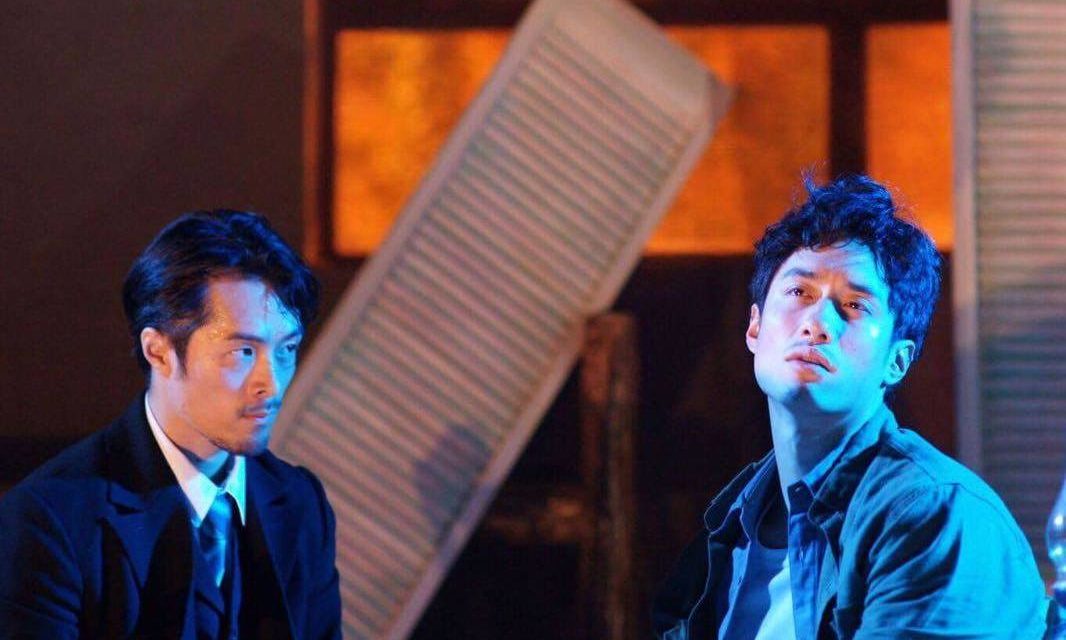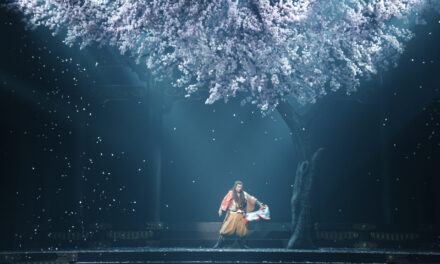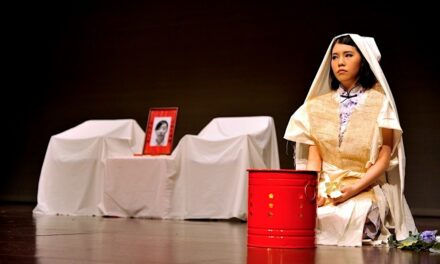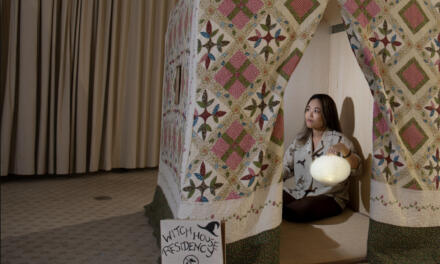When Chan Chu-Hei’s production of Eugene O’Neill’s Beyond the Horizon finally premiered at N2 of the Cattle Depot Artist Village last week, I can see that Mr Chan is probably one of the living theatre directors who is destined to direct this play. It is a haunting production with an acting powerhouse that transcends O’Neill’s first full-length play into a magical experience.
Mr Chan’s affection to the Pulitzer Prize-winning play is nowhere to hide. Not only his own theatre company is named Theatre Horizon, directly referenced back to the great American tragedy, but his production clearly shows that not only he loves this play, but he actually knows this play.
Beyond the Horizon is one of the great American plays that whoever works in the theatre world should have at least heard about it. O’Neill’s works are considered as the first generation of American tragedies, but they are also infamously long and hard to read for the contemporary readers, thus not a lot of people is that enthusiastic to pick up a copy of one of those plays and read it. I was one of those reluctances who just hoped to just see a production of O’Neill’s play instead of reading one.
This thought of mine has changed after seeing Mr Chan’s production of Beyond the Horizon. This play actually is a very engaging piece that one in the audience will keep longing for the ending to come. The story revolves around two brothers Andrew and Robert, who are the sons of farmer James of Mayo Farm. Elder brother Andrew is a talented farmer, while Robert is more skilful in the arts instead.
Originally, Robert wants to leave his family, following his Uncle Dick, a sea captain, to set sail around the world. However, because of Ruth, his love who is supposed to be married to Andy for the prosperity of the two families of Mayo and Atkins, Robert decides to stay at the very last minute. When Andrew knows about it, he decides to take Robert’s place and become a sailor instead. This is where tragedy falls.
Mr Chan’s production, designed by William Kwok, sticks back to the basis of realistic drama, but to me, it is more than that. First of all, the production is realistic, but also minimalistic at the same time, suggesting the audience that this is a representation of the play, even though it is the full-length version. Second, of all, there is an introduction before the play begins, which signifies a distance between the play and the audience. Thirdly, before the audience enters the ‘studio theatre’, transformed from a single unit in the Cattle Depot, they need to wait at a corridor that is delicately designed with photos of O’Neill, as well as some props and furniture referenced back to that era, the turn of the last century. These elements invite the audience to enter the world of O’Neill with warmth and also telling the audience to prepare for the world as well.
I think these touches are immensely successful, especially for a person who has not fully conceived an O’Neill drama. Once the show starts, I am already engaged with the story. Not only the scenery is viscerally vintage and authentic, but the use of the unit, having the audience facing the side where windows are opened, so that the audience can always get a glimpse of a fragment of Cattle Depot’s architecture, magically gives an illusion of drama and reality, as if Cattle Depot is part of Mayo’s farm. It somehow gives power to the heavy drama as the play seems to have extended beyond the walls of the performing space. Not to mention the unit itself resembles the shape of a barn, which also gives a layer of authenticity.
Mr Chan as a director has always been a master of symbols, but this time, he uses them cleverly and contently. He clearly tells the audience with his production that it is the play itself that matters, and I totally agree. As the play unfolds, I have to submit myself to the master-mind and skills of O’Neill. Yes, it is traditional, but one can still see the brilliance of it. I dare to say, that O’Neill is still by far better than Tennessee Williams and Arthur Miller when it comes to the manipulation of the audience’s emotions.
Of course, the play has a social commentary on capitalism, but what I appreciate O’Neill’s touches over Williams and Miller is that, he makes social commentary based on humanistic situations, which is more grounded than Williams’s and Miller’s. It has to do with heightened relationships and emotions between the characters he creates. O’Neill clearly knows humans in their most radical states. He knows what innocence means, what jealousy means, what longing means, what selfishness means, and most of all, he knows that humans have insufferable desires that will lead to horrific tragic ends.
And that is why I believe that Mr Chan is destined to direct this play because this production gives me a strong sense that he clearly knows O’Neill’s purposes. Under the authentic production design, the well-thought lighting design by Gabriel Fung, and the music by Chan Wai-Fat which cleverly distorts the first and second half of the play, the production tells the play faithfully without adding a lot of blatant symbolism.
The representation, however, is, in fact, contemporary, where symbols are placed by theatrical elements instead. When we enter the second-half of the play, the lighting and the music becomes more and more poetic. The lights become more and more semiotic than semantic. The music from the electro guitar strikes a chord of modernity, suggesting the play is getting closer and closer to the modern world. It is subtle but clear and cleanly executed.
Of course, credit must be given to the company of actors in this production, which is a powerhouse. The casting is one major important element of this production’s success, as all actors fit their parts. The side-cast is combined with a group of Hong Kong veteran actors who I respect and admire, especially Luther Fung as James and Patra Au as Mrs Atkins, who only have one to two scenes in the whole play, but do not disappoint with their mature crafts and powerful presences as usual.
However, it is the trio of Robert, Ruth and Andrew that carries that whole play, which to my surprise, the three young actors who play the mentioned roles tackle this hardcore play with charm and stamina, and in return giving an outstanding performance with substances.
Lau Chun-Him showcases his versatility by playing different stages of Robert in different distinct lights, which engages the audience with his immense skills. Ko Ki-Yan as Ruth exudes a rare organic charm that some might think it is too casual as an American farm girl, but personally, Miss Ko is still a joy to see, especially in the last act where I can feel the creeps from her devastation and panic.
Lai Chai-Ming as Andrew is one of the highlights of the night though. Freshly graduated from Hong Kong Academy of Performing Arts last year, Mr Lai already shows potential in his school performance of A Streetcar Named Desire. By seeing him in Beyond the Horizon, I can tell that Mr Lai has developed his career in the right direction under Mr Chan’s care. Mr Lai’s charm with his well-built physique is exuberant once he steps into the performing space.
Yet, he also refines with details. His delivery of his lines as well as his choices to show the differences between farmer Andrew, sailor Andrew, and businessman Andrew are impeccably clear, as well as engaging and soothing simultaneously. One just cannot take one’s eyes off him during the show.
All the individual praises are not more important than the affection towards O’Neill’s masterpiece from Mr Chan and the whole company led by him. I can see it in the production that O’Neill’s work is coated with intensive care and respect, and above all, hitting every mark that this work requires hitting. It is haunting to sense a vibe of Americanism while I am seeing an all-Hong-Kong-Chinese cast. It is this kind of magic that I leave the theatre in awe.
If Beyond the Horizon is going to be re-run, or if Theatre Horizon is going to produced another O’Neill play, I will definitely go and see it, and will also recommend aspiring playwrights who have not seen or read an O’Neill play to see it, to go and learn from the master.
PRODUCTION CREDITS:
Beyond the Horizon by Eugene O’Neill
Unit N2, Cattle Depot Artist Village
Performed in Cantonese
Closed on 31st March 2017
This article by Clement Lee was originally published on The Typewriter. Reposted with permission. Read the original article and The Typewriter ArtMagazine.
This post was written by the author in their personal capacity.The opinions expressed in this article are the author’s own and do not reflect the view of The Theatre Times, their staff or collaborators.
This post was written by Clement Lee.
The views expressed here belong to the author and do not necessarily reflect our views and opinions.


















